The dumbbell rear lateral raise is an upper-body exercise that trains your upper back and shoulders, and your rear delts in particular.
The rear delts are small, often neglected muscles located on the rear of the shoulders. Training them is important because it ensures your shoulders grow proportionally and can lower your risk of injury.
Many people get confused about how to perform the rear lateral raise correctly, because there’s a befuddling amount of arcane, contradictory advice on how to do it.
In this article, we’ll set everything straight. By the end you’ll understand what the dumbbell rear lateral raise is, why it’s beneficial, which muscles it works, how to do it with proper form, and the best rear lateral raise variations.
What Is the Dumbbell Rear Lateral Raise?
The dumbbell rear lateral raise is an upper-body exercise that primarily trains the rear deltoids (the portions of your shoulder muscles that are located behind your shoulder joints on your upper back).
The dumbbell rear lateral raise goes by numerous names, including the . . .
- Bent-over rear delt fly
- Rear lateral raise
- Dumbbell rear delt fly
- Rear delt dumbbell fly
- DB rear lateral raise
While many people think these refer to slightly different rear lateral raise variations, they’re actually all names for the same exercise, which in this article we’ll refer to as “the dumbbell rear lateral raise.”
Seated Rear Lateral Raise vs. Bent-Over Rear Lateral Raise
The two most common ways to perform the rear lateral raise are:
- While sitting on a bench, which is known as the seated rear lateral raise
- While standing and bent over at the waist, which is known as the bent-over rear lateral raise
Both exercises are equally effective at training the rear delts, but most people find performing the dumbbell rear lateral raise seated more comfortable, which is why I typically recommend it over the bent-over rear lateral raise and why it’s the variation I include in my programs Bigger Leaner Stronger for men and Thinner Leaner Stronger for women.
Dumbbell Rear Lateral Raise: Benefits
1. It effectively trains your rear delts.
Research shows that exercises that closely mimic the dumbbell rear lateral raise such as the rear delt fly machine activate the rear delts to a high degree, and possibly more so than compound exercises like the lat pulldown and barbell row.
This doesn’t necessarily mean they’re better for building muscle (high muscle activation doesn’t always mean more muscle growth), but it’s a sign they’re an effective exercise for training the rear delts.
2. It ensures that your shoulders are proportional.
The rear delts often aren’t trained as much as the other heads of the deltoids, which means they need a bit of extra attention if you want them to grow at the same rate as your front and side delts.
The dumbbell rear lateral raise effectively trains the rear delts, which makes it ideal for ensuring your shoulders develop proportionally.
3. It improves the health of your shoulders.
Many weightlifters spend more time training their front and side delts with pushing exercises than they do training their rear delts with pulling exercises.
Over time this can cause a strength and size imbalance between your rear delts and your front and side delts, which may increase your risk of injury.
The dumbbell rear lateral raise is an excellent isolation exercise for fixing this imbalance.
Dumbbell Rear Lateral Raise: Muscles Worked
The main muscles worked by the dumbbell rear lateral raise are the . . .
- Rear deltoids
- Trapezius
- Rhomboids
- Infraspinatus
- Teres major and minor
Here’s how those muscle look on your body:
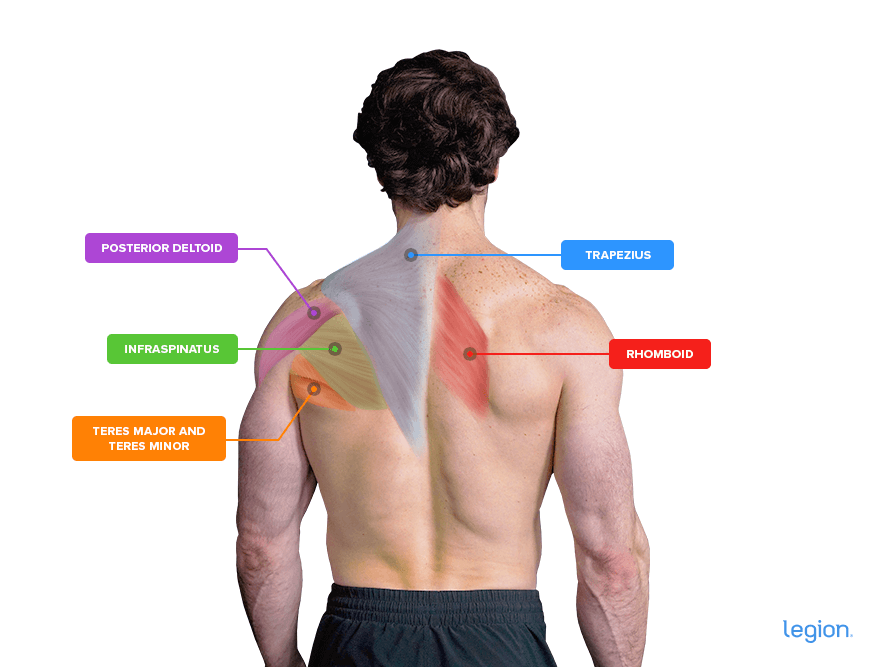
How to Do the Dumbbell Rear Lateral Raise
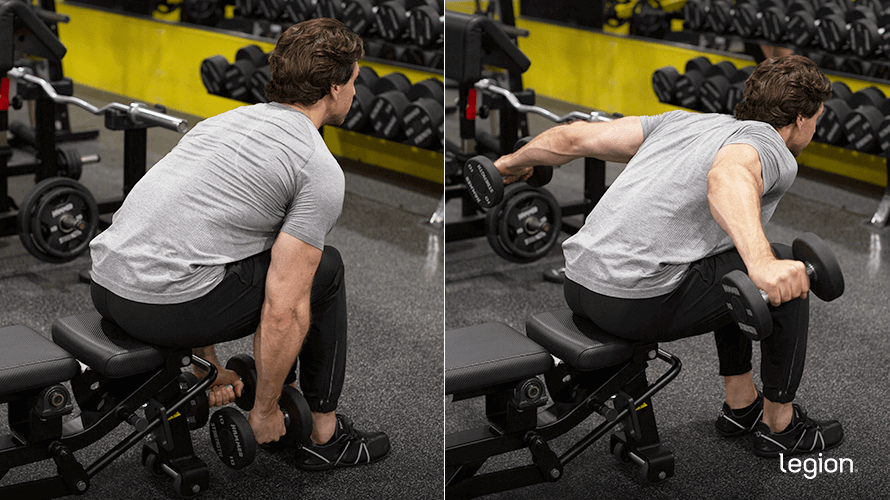
The best way to learn proper dumbbell rear lateral raise form is to break the exercise up into three parts: set up, raise, and descend.
1. Set up
While holding a dumbbell in each hand, sit on a bench and plant your feet about 12 inches from the base of the bench. Bend forward at the hips so that your upper body is as close to parallel to the floor as possible and your back is flat, then allow your arms to hang straight down.
Your palms should be facing each other and the dumbbells should hang behind your calves, between the bench and your lower legs.
2. Raise
While keeping your back flat, a slight bend in your elbows, and a neutral grip on the dumbbells (thumbs pointing forward), lift the dumbbells out to the sides by driving your elbows out and up until your upper arms are parallel to the floor.
3. Descend
Reverse the movement to return the dumbbells to their starting position behind your calves.
Don’t let the dumbbells fall back to the starting position or try to lower them especially slowly—the entire descent should be controlled but only take about a second.
The Best Dumbbell Rear Lateral Raise Variations
1. Machine Rear Delt Fly
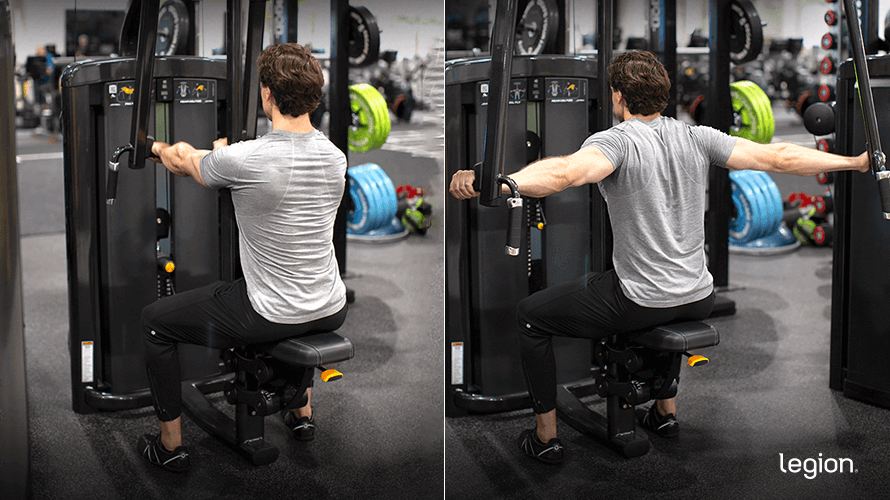
Research shows the rear delt fly machine activates the rear delts more than exercises like the seated cable row and lat pulldown. This doesn’t necessarily mean it’s more effective than these exercises for developing your rear delts (especially since you can use far less weight with the machine rear delt fly), but it shows that it’s an effective exercise for training the rear delts and a viable alternative to the dumbbell rear lateral raise.
2. Cable Rear Delt Fly
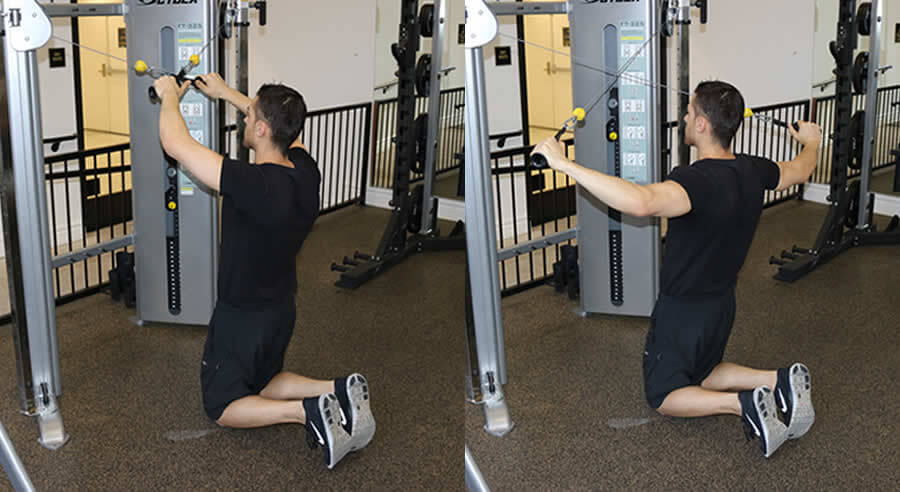
The cable rear delt fly or “cable rear lateral raise” trains your rear delts in a similar way to the dumbbell rear lateral raise. The difference is that the cable offers constant tension throughout each set, which stimulates your rear delts slightly differently to other free-weight rear delt exercises.
3. Dumbbell Lying Rear Lateral Raise
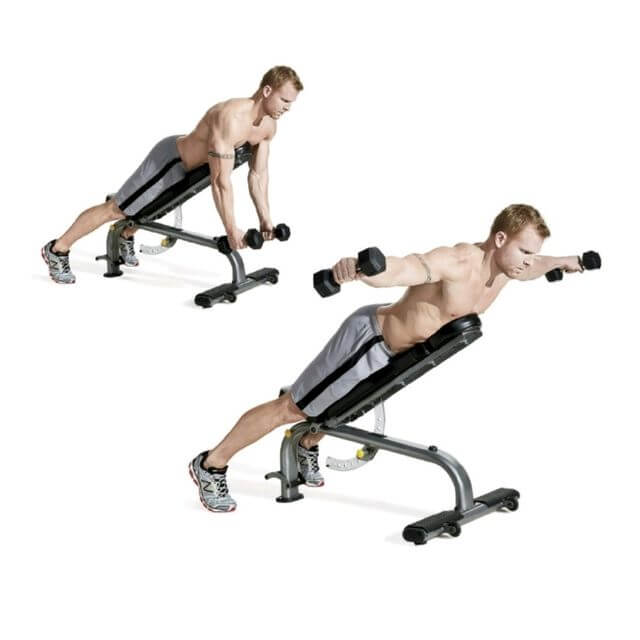
The only difference between the regular rear lateral raise and the dumbbell lying rear lateral raise is that in the latter you lie prone on a bench. This prevents you from using momentum to “cheat” the weight up, which forces your rear delts to work harder, increasing the effectiveness of the exercise. That said, you can normally lift less weight on the dumbbell lying rear lateral raise, which negates some of its muscle-building potential.
Scientific References +
- Franke, R., Botton, C. E., Rodrigues, R., & Pinto, R. S. (n.d.). (PDF) Analysis of anterior, middle and posterior deltoid activation during single and multijoint exercises. Retrieved May 3, 2022, from https://www.researchgate.net/publication/263292517_Analysis_of_anterior_middle_and_posterior_deltoid_activation_during_single_and_multijoint_exercises
- Vigotsky, A. D., Beardsley, C., Contreras, B., Steele, J., Ogborn, D., & Phillips, S. M. (2017). Greater electromyographic responses do not imply greater motor unit recruitment and “hypertrophic potential” cannot be inferred. Journal of Strength and Conditioning Research, 31(1), E1–E2. https://doi.org/10.1519/JSC.0000000000001249
- Page, P. (2011). SHOULDER MUSCLE IMBALANCE AND SUBACROMIAL IMPINGEMENT SYNDROME IN OVERHEAD ATHLETES. International Journal of Sports Physical Therapy, 6(1), 51. /pmc/articles/PMC3105366/










